Policy Instruments to Encourage the Adoption of Nature-Based Solutions in Urban Landscapes
Abstract
1. Introduction
2. Materials and Methods
3. Results
3.1. Bibliometric Analysis
3.2. Content Analysis
- Municipalities to allow access to land and legal permissions [13];
- Benchmarks with desired characteristics, operational aspects and monitoring [46];
- Gardens regulated by the municipality, divided into parcels for citizens [52];
- Plan greener bicycle lanes [63];
- Creation of an area in a city center closed to motorized traffic [23].
- Insurance companies to consider NBS, including externalities to increase value [2];
- Subsidized start-up costs for gardeners and tax breaks for rooftop farmers [13];
- Water companies to offer economic incentives to consumers that divert water into their lawns to help in flood control [45];
- Lease agreements for spaces for maintaining gardens and payment of small fees to enter [42];
- Private companies to internalize services provided by the landscape [68];
- Subsidize farmers to adopt more sustainable practices [67];
- Congestion tax and transit subsidies to reduce the number of automobiles [4];
- Land acquisition and taxes to promote land conservation [4]; and
- Encourage the creation of small businesses for the maintenance of green spaces [4].
4. Discussion
5. Conclusions and Recommendations
Author Contributions
Funding
Informed Consent Statement
Conflicts of Interest
References
- Liu, L.; Jensen, M.B. Climate resilience strategies of Beijing and Copenhagen and their links to sustainability. Hydrol. Res. 2017, 19, 997–1013. [Google Scholar] [CrossRef]
- Denjean, B.; Altamirano, M.A.; Graveline, N.; Giordano, R.; van der Keur, P.; Moncoulon, D.; Weinberg, J.; Costa, M.M.; Kozinc, Z.; Mulligan, M.; et al. Natural Assurance Scheme: A level playing field framework for Green-Grey infrastructure development. Environ. Res. 2017, 159, 24–38. [Google Scholar] [CrossRef] [PubMed]
- Derkzen, M.L.; van Teeffelen, A.J.; Verburg, P. Green infrastructure for urban climate adaptation: How do residents’ views on climate impacts and green infrastructure shape adaptation preferences? Landsc. Urban Plan. 2017, 157, 106–130. [Google Scholar] [CrossRef]
- Fink, H.S. Human-Nature for Climate Action: Nature-Based Solutions for Urban Sustainability. Sustainability 2016, 8, 254. [Google Scholar] [CrossRef]
- Schubert, P.; Ekelund, N.G.A.; Beery, T.; Wamsler, C.; Jönsson, K.I.; Roth, A.; Stålhammar, S.; Bramryd, T.; Johansson, M.; Palo, T. Implementation of the ecosystem services approach in Swedish municipal planning. J. Environ. Policy Plan. 2017, 20, 298–312. [Google Scholar] [CrossRef]
- Falcone, P.M.; De Rosa, S.P. Use of fuzzy cognitive maps to develop policy strategies for the optimization of municipal waste management: A case study of the land of fires (Italy). Land Use Policy 2020, 96, 104680. [Google Scholar] [CrossRef]
- Kärkkäinen, L.; Lehtonenb, H.; Helinb, J.; Lintunenb, J.; Peltonen-Sainiob, P.; Reginac, K.; Uusivuorib, J.; Packalena, T. Evaluation of policy instruments for supporting greenhouse gas mitigation efforts in agricultural and urban land use. Land Use Policy 2020, 99, 104991. [Google Scholar] [CrossRef]
- Ruangpan, L.; Vojinovic, Z.; Di Sabatino, S.; Leo, L.S.; Capobianco, V.; Oen, A.M.P.; McClain, M.E.; Lopez-Gunn, E. Nature-based solutions for hydro-meteorological risk reduction: A state-of-the-art review of the research area. Nat. Hazards Earth Syst. Sci. 2020, 20, 243–270. [Google Scholar] [CrossRef]
- Faivre, N.; Fritz, M.; Freitas, T.; De Boissezon, B.; Vandewoestijne, S. Nature-Based Solutions in the EU: Innovating with nature to address social, economic and environmental challenges. Environ. Res. 2017, 159, 509–518. [Google Scholar] [CrossRef]
- Fan, P.; Ouyang, Z.; Basnou, C.; Pino, J.; Park, H.; Chen, J. Nature-based solutions for urban landscapes under post-industrialization and globalization: Barcelona versus Shanghai. Environ. Res. 2017, 156, 272–283. [Google Scholar] [CrossRef]
- European Commission. The EU and Nature-Based Solutions. Available online: https://ec.europa.eu/info/research-and-innovation/research-area/environment/nature-based-solutions_en (accessed on 1 December 2020).
- Cohen-Shacham, E.; Walters, G.; Janzen, C.; Maginnis, S. Nature-Based Solutions to Address Global Societal Challenges; IUCN: Gland, Switzerland, 2016; 97p. [Google Scholar] [CrossRef]
- Artmann, M.; Sartison, K. The Role of Urban Agriculture as a Nature-Based Solution: A Review for Developing a Systemic Assessment Framework. Sustainability 2018, 10, 1937. [Google Scholar] [CrossRef]
- Escobedo, F.J.; Giannico, V.; Jim, C.; Sanesi, G.; Lafortezza, R. Urban forests, ecosystem services, green infrastructure and nature-based solutions: Nexus or evolving metaphors? Urban For. Urban Green. 2019, 37, 3–12. [Google Scholar] [CrossRef]
- Fernandes, J.P.; Guiomar, N. Nature-based solutions: The need to increase the knowledge on their potentialities and limits. Land Degrad. Dev. 2018, 29, 1925–1939. [Google Scholar] [CrossRef]
- Almenar, J.B.; Rugani, B.; Geneletti, D.; Brewer, T. Integration of ecosystem services into a conceptual spatial planning framework based on a landscape ecology perspective. Landsc. Ecol. 2018, 33, 2047–2059. [Google Scholar] [CrossRef]
- Eisenberg, B.; Polcher, V. Nature Based Solutions Technical Handbook. In UNaLab D5.1 Project Deliverable NBS Technical Handbook; European Commission: Brussels, Belgium, 2018; 174p. [Google Scholar]
- Hawxwell, T.; Mok, S.; Maciulyte, E.; Sautter, J.; Theobald, J.A.; Dobrokhotova, E.; Suska, P. Municipal Governance Guidelines. In UNaLab D6.2 Project Deliverable; European Commission: Brussels, Belgium, 2018; 81p. [Google Scholar]
- Brink, E.; Wamsler, C. Collaborative Governance for Climate Change Adaptation: Mapping citizen-municipality interactions. Environ. Policy Gov. 2017, 28, 82–97. [Google Scholar] [CrossRef]
- Kabisch, N.; Frantzeskaki, N.; Pauleit, S.; Naumann, S.; Davis, M.; Artmann, M.; Haase, D.; Knapp, S.; Korn, H.; Stadler, J.; et al. Nature-based solutions to climate change mitigation and adaptation in urban areas: Perspectives on indicators, knowledge gaps, barriers, and opportunities for action. Ecol. Soc. 2016, 21. [Google Scholar] [CrossRef]
- Loiseau, E.; Saikku, L.; Antikainen, R.; Droste, N.; Hansjürgens, B.; Pitkänen, K.; Leskinen, P.; Kuikman, P.; Thomsen, M. Green economy and related concepts: An overview. J. Clean. Prod. 2016, 139, 361–371. [Google Scholar] [CrossRef]
- Pontee, N.; Narayan, S.; Beck, M.; Hosking, A.H. Nature-based solutions: Lessons from around the world. Proc. Inst. Civ. Eng.-Marit. Eng. 2016, 169, 29–36. [Google Scholar] [CrossRef]
- Faivre, N.; Sgobbi, A.; Happaerts, S.; Raynal, J.; Schmidt, L. Translating the Sendai Framework into action: The EU approach to ecosystem-based disaster risk reduction. Int. J. Disaster Risk Reduct. 2018, 32, 4–10. [Google Scholar] [CrossRef]
- Zölch, T.; Wamsler, C.; Pauleit, S. Integrating the ecosystem-based approach into municipal climate adaptation strategies: The case of Germany. J. Clean. Prod. 2018, 170, 966–977. [Google Scholar] [CrossRef]
- Sarabi, S.E.; Han, Q.; Romme, A.G.L.; De Vries, B.; Wendling, L. Key Enablers of and Barriers to the Uptake and Implementation of Nature-Based Solutions in Urban Settings: A Review. Resource 2019, 8, 121. [Google Scholar] [CrossRef]
- Roebeling, P.; Saraiva, M.; Palla, A.; Gnecco, I.; Teotónio, C.; Fidélis, T.; Martins, F.; Alves, H.; Rocha, J. Assessing the socio-economic impacts of green/blue space, urban residential and road infrastructure projects in the Confluence (Lyon): A hedonic pricing simulation approach. J. Environ. Plan. Manag. 2016, 60, 482–499. [Google Scholar] [CrossRef]
- Martin, J.; Scolobig, A.; Linnerooth-Bayer, J.; Liu, W.; Balsiger, J. Catalyzing Innovation: Governance Enablers of Nature-Based Solutions. Sustainability 2021, 13, 1971. [Google Scholar] [CrossRef]
- Lafortezza, R.; Chen, J.; van den Bosch, C.K.; Randrup, T.B. Nature-based solutions for resilient landscapes and cities. Environ. Res. 2018, 165, 431–441. [Google Scholar] [CrossRef]
- Albert, C.; Schröter, B.; Haase, D.; Brillinger, M.; Henze, J.; Herrmann, S.; Gottwald, S.; Guerrero, P.; Nicolas, C.; Matzdorf, B. Addressing societal challenges through nature-based solutions: How can landscape planning and governance research contribute? Landsc. Urban Plan. 2019, 182, 12–21. [Google Scholar] [CrossRef]
- Nordin, A.; Hanson, H.I.; Olsson, J.A. Integration of the ecosystem services concept in planning documents from six municipalities in southwestern Sweden. Ecol. Soc. 2017, 22, 26. [Google Scholar] [CrossRef][Green Version]
- Scarano, F. Ecosystem-based adaptation to climate change: Concept, scalability and a role for conservation science. Perspect. Ecol. Conserv. 2017, 15, 65–73. [Google Scholar] [CrossRef]
- Nesshöver, C.; Assmuth, T.; Irvine, K.N.; Rusch, G.M.; Waylen, K.A.; Delbaere, B.; Haase, D.; Jones-Walters, L.; Keune, H.; Kovacs, E.; et al. The science, policy and practice of nature-based solutions: An interdisciplinary perspective. Sci. Total Environ. 2017, 579, 1215–1227. [Google Scholar] [CrossRef] [PubMed]
- Mendes, R.; Fidélis, T.; Roebeling, P.; Teles, F. The Institutionalization of Nature-Based Solutions—A Discourse Analysis of Emergent Literature. Resource 2020, 9, 6. [Google Scholar] [CrossRef]
- Falcone, P.M.; Lopolito, A.; Sica, E. Instrument mix for energy transition: A method for policy formulation. Technol. Forecast. Soc. Chang. 2019, 148, 119706. [Google Scholar] [CrossRef]
- Frantzeskaki, N.; Vandergert, P.; Connop, S.; Schipper, K.; Zwierzchowska, I.; Collier, M.; Lodder, M. Examining the policy needs for implementing nature-based solutions in cities: Findings from city-wide transdisciplinary experiences in Glasgow (UK), Genk (Belgium) and Poznań (Poland). Land Use Policy 2020, 96, 104688. [Google Scholar] [CrossRef]
- Hawxwell, T.; Mok, S.; Maciulyte, E.; Sautter, J.; Theobald, J.A.; Dobrokhotova, E.; Suska, P. Municipal governance recommendations for front-runner cities. In UNaLab D5.2 Project Deliverable; European Commission: Brussels, Belgium, 2019; 126p. [Google Scholar]
- Ingold, K.; Stadelmann-Steffen, I.; Kammermann, L. The acceptance of instruments in instrument mix situations: Citizens’ perspective on Swiss energy transition. Res. Policy 2019, 48, 103694. [Google Scholar] [CrossRef]
- Davies, C.; Chen, W.Y.; Sanesi, G.; Lafortezza, R. The European Union roadmap for implementing nature-based solutions: A review. Environ. Sci. Policy 2021, 121, 49–67. [Google Scholar] [CrossRef]
- Davis, M.; Abhold, K.; Mederake, L.; Knoblauch, D. Nature-Based Solutions in European and National Policy Frameworks; Deliverable 1.5, NATURVATION, 2018. Horizon 2020 Grant Agreement No 730243; European Commission: Geneva, Switzerland, 2018; 50p. [Google Scholar]
- Whelchel, A.W.; Reguero, B.G.; van Wesenbeeck, B.; Renaud, F.G. Advancing disaster risk reduction through the integration of science, design, and policy into eco-engineering and several global resource management processes. Int. J. Disaster Risk Reduct. 2018, 32, 29–41. [Google Scholar] [CrossRef]
- DeLosRíos-White, M.I.; Roebeling, P.; Valente, S.; Vaittinen, I. Mapping the Life Cycle Co-Creation Process of Nature-Based Solutions for Urban Climate Change Adaptation. Resource 2020, 9, 39. [Google Scholar] [CrossRef]
- van der Jagt, A.P.; Szaraz, L.R.; Delshammar, T.; Cvejić, R.; Santos, A.; Goodness, J.; Buijs, A. Cultivating nature-based solutions: The governance of communal urban gardens in the European Union. Environ. Res. 2017, 159, 264–275. [Google Scholar] [CrossRef] [PubMed]
- Castonguay, A.; Iftekhar, S.; Urich, C.; Bach, P.; Deletic, A. Integrated modelling of stormwater treatment systems uptake. Water Res. 2018, 142, 301–312. [Google Scholar] [CrossRef] [PubMed]
- Catalano, C.; Laudicina, V.A.; Badalucco, L.; Guarino, R. Some European green roof norms and guidelines through the lens of biodiversity: Do ecoregions and plant traits also matter? Ecol. Eng. 2018, 115, 15–26. [Google Scholar] [CrossRef]
- van Oudenhoven, A.P.; Aukes, E.; Bontje, L.E.; Vikolainen, V.; van Bodegom, P.M.; Slinger, J.H. ‘Mind the Gap’ between ecosystem services classification and strategic decision making. Ecosyst. Serv. 2018, 33, 77–88. [Google Scholar] [CrossRef]
- Wamsler, C.; Niven, L.; Beery, T.H.; Bramryd, T.; Ekelund, N.; Jönsson, K.I.; Osmani, A.; Palo, T.; Stålhammar, S. St Operationalizing ecosystem-based adaptation: Harnessing ecosystem services to buffer communities against climate change. Ecol. Soc. 2016, 21, 31. [Google Scholar] [CrossRef]
- Calvert, T.; Sinnett, D.; Smith, N.; Jerome, G.; Burgess, S.; King, L. Setting the Standard for Green Infrastructure: The Need for, and Features of, a Benchmark in England. Plan. Pract. Res. 2018. [Google Scholar] [CrossRef]
- Mendonça, R.; Mendonça, R.; Roebeling, P.; Roebeling, P.; Martins, F.; Martins, F.; Fidélis, T.; Fidélis, T.; Teotónio, C.; Teotónio, C.; et al. Assessing economic instruments to steer urban residential sprawl, using a hedonic pricing simulation modelling approach. Land Use Policy 2020, 92. [Google Scholar] [CrossRef]
- Pita, C.; Pierce, G.; Theodossiou, I.; MacPherson, K. An overview of commercial fishers’ attitudes towards marine protected areas. Hydrobiology 2011, 670, 289–306. [Google Scholar] [CrossRef]
- Raymond, C.; Frantzeskaki, N.; Kabisch, N.; Berry, P.; Breil, M.; Nita, M.R.; Geneletti, D.; Calfapietra, C. A framework for assessing and implementing the co-benefits of nature-based solutions in urban areas. Environ. Sci. Policy 2017, 77, 15–24. [Google Scholar] [CrossRef]
- Boelee, E.; Janse, J.; Le Gal, A.; Kok, M.; Alkemade, R.; Ligtvoet, W. Overcoming water challenges through nature-based solutions. Hydrol. Res. 2017, 19, 820–836. [Google Scholar] [CrossRef]
- Camps-Calvet, M.; Langemeyer, J.; Calvet-Mir, L.; Gómez-Baggethun, E. Ecosystem services provided by urban gardens in Barcelona, Spain: Insights for policy and planning. Environ. Sci. Policy 2016, 62, 14–23. [Google Scholar] [CrossRef]
- Capotorti, G.; Mollo, B.; Zavattero, L.; Anzellotti, I.; Celesti-Grapow, L. Setting Priorities for Urban Forest Planning. A Comprehensive Response to Ecological and Social Needs for the Metropolitan Area of Rome (Italy). Sustainability 2015, 7, 3958–3976. [Google Scholar] [CrossRef]
- Chan, F.K.S.; Griffiths, J.A.; Higgitt, D.; Xu, S.; Zhu, F.; Tang, Y.-T.; Xu, Y.; Thorne, C.R. “Sponge City” in China—A breakthrough of planning and flood risk management in the urban context. Land Use Policy 2018, 76, 772–778. [Google Scholar] [CrossRef]
- Connop, S.; Vandergert, P.; Eisenberg, B.; Collier, M.J.; Nash, C.; Clough, J.; Newport, D. Renaturing cities using a regionally-focused biodiversity-led multifunctional benefits approach to urban green infrastructure. Environ. Sci. Policy 2016, 62, 99–111. [Google Scholar] [CrossRef]
- Bellamy, C.C.; van der Jagt, A.P.; Barbour, S.; Smith, M.; Moseley, D. A spatial framework for targeting urban planning for pollinators and people with local stakeholders: A route to healthy, blossoming communities? Environ. Res. 2017, 158, 255–268. [Google Scholar] [CrossRef]
- Davies, H.J.; Doick, K.J.; Hudson, M.D.; Schreckenberg, K. Challenges for tree officers to enhance the provision of regulating ecosystem services from urban forests. Environ. Res. 2017, 156, 97–107. [Google Scholar] [CrossRef] [PubMed]
- Gulsrud, N.M.; Hertzog, K.; Shears, I. Innovative urban forestry governance in Melbourne?: Investigating “green placemaking” as a nature-based solution. Environ. Res. 2018, 161, 158–167. [Google Scholar] [CrossRef] [PubMed]
- Hernández-Morcillo, M.; Burgess, P.; Mirck, J.; Pantera, A.; Plieninger, T. Scanning agroforestry-based solutions for climate change mitigation and adaptation in Europe. Environ. Sci. Policy 2018, 80, 44–52. [Google Scholar] [CrossRef]
- Jim, C.Y.; Bosch, C.K.V.D.; Chen, W.Y. Acute Challenges and Solutions for Urban Forestry in Compact and Densifying Cities. J. Urban Plan. Dev. 2018, 144, 04018025. [Google Scholar] [CrossRef]
- Liquete, C.; Udias, A.; Conte, G.; Grizzetti, B.; Masi, F. Integrated valuation of a nature-based solution for water pollution control. Highlighting hidden benefits. Ecosyst. Serv. 2016, 22, 392–401. [Google Scholar] [CrossRef]
- McVittie, A.; Cole, L.; Wreford, A.; Sgobbi, A.; Yordi, B. Ecosystem-based solutions for disaster risk reduction: Lessons from European applications of ecosystem-based adaptation measures. Int. J. Disaster Risk Reduct. 2018, 32, 42–54. [Google Scholar] [CrossRef]
- Niță, M.R.; Badiu, D.L.; Onose, D.A.; Gavrilidis, A.A.; Grădinaru, S.R.; Năstase, I.I.; Lafortezza, R. Using local knowledge and sustainable transport to promote a greener city: The case of Bucharest, Romania. Environ. Res. 2018, 160, 331–338. [Google Scholar] [CrossRef] [PubMed]
- Shafray, E.; Kim, S. A Study of Walkable Spaces with Natural Elements for Urban Regeneration: A Focus on Cases in Seoul, South Korea. Sustainability 2017, 9, 587. [Google Scholar] [CrossRef]
- Turkelboom, F.; Leone, M.; Jacobs, S.; Kelemen, E.; García-Llorente, M.; Baró, F.; Termansen, M.; Barton, D.N.; Berry, P.; Stange, E.; et al. When we cannot have it all: Ecosystem services trade-offs in the context of spatial planning. Ecosyst. Serv. 2018, 29, 566–578. [Google Scholar] [CrossRef]
- Zevenbergen, C.; Fu, D.; Pathirana, A. Transitioning to Sponge Cities: Challenges and Opportunities to Address Urban Water Problems in China. Water 2018, 10, 1230. [Google Scholar] [CrossRef]
- .Opdam, P.; Steingröver, E. How could companies engage in sustainable landscape management? An exploratory perspective. Sustainability 2018, 10, 220. [Google Scholar] [CrossRef]
- Rambonilaza, T.; Neang, M. Exploring the potential of local market in remunerating water ecosystem services in Cambodia: An application for endogenous attribute non-attendance modelling. Water Resour. Econ. 2019, 25, 14–26. [Google Scholar] [CrossRef]
- Fu, Y.; Zhao, J.; Peng, W.; Zhu, G.; Quan, Z.; Li, C. Spatial modelling of the regulating function of the Huangqihai Lake wetland ecosystem. J. Hydrol. 2018, 564, 283–293. [Google Scholar] [CrossRef]
- Xing, Y.; Jones, P.; Donnison, I. Characterisation of Nature-Based Solutions for the Built Environment. Sustainability 2017, 9, 149. [Google Scholar] [CrossRef]
- Wild, T.; Henneberry, J.; Gill, L. Comprehending the multiple ‘values’ of green infrastructure—Valuing nature-based solutions for urban water management from multiple perspectives. Environ. Res. 2017, 158, 179–187. [Google Scholar] [CrossRef] [PubMed]
- Hoyle, H.; Jorgensen, A.; Warren, P.; Dunnett, N.; Evans, K. “Not in their front yard” The opportunities and challenges of introducing perennial urban meadows: A local authority stakeholder perspective. Urban For. Urban Green. 2017, 25, 139–149. [Google Scholar] [CrossRef]
- Slovic, A.D.; Ribeiro, H. Policy instruments surrounding urban air quality: The cases of São Paulo, New York City and Paris. Environ. Sci. Policy 2018, 81, 1–9. [Google Scholar] [CrossRef]
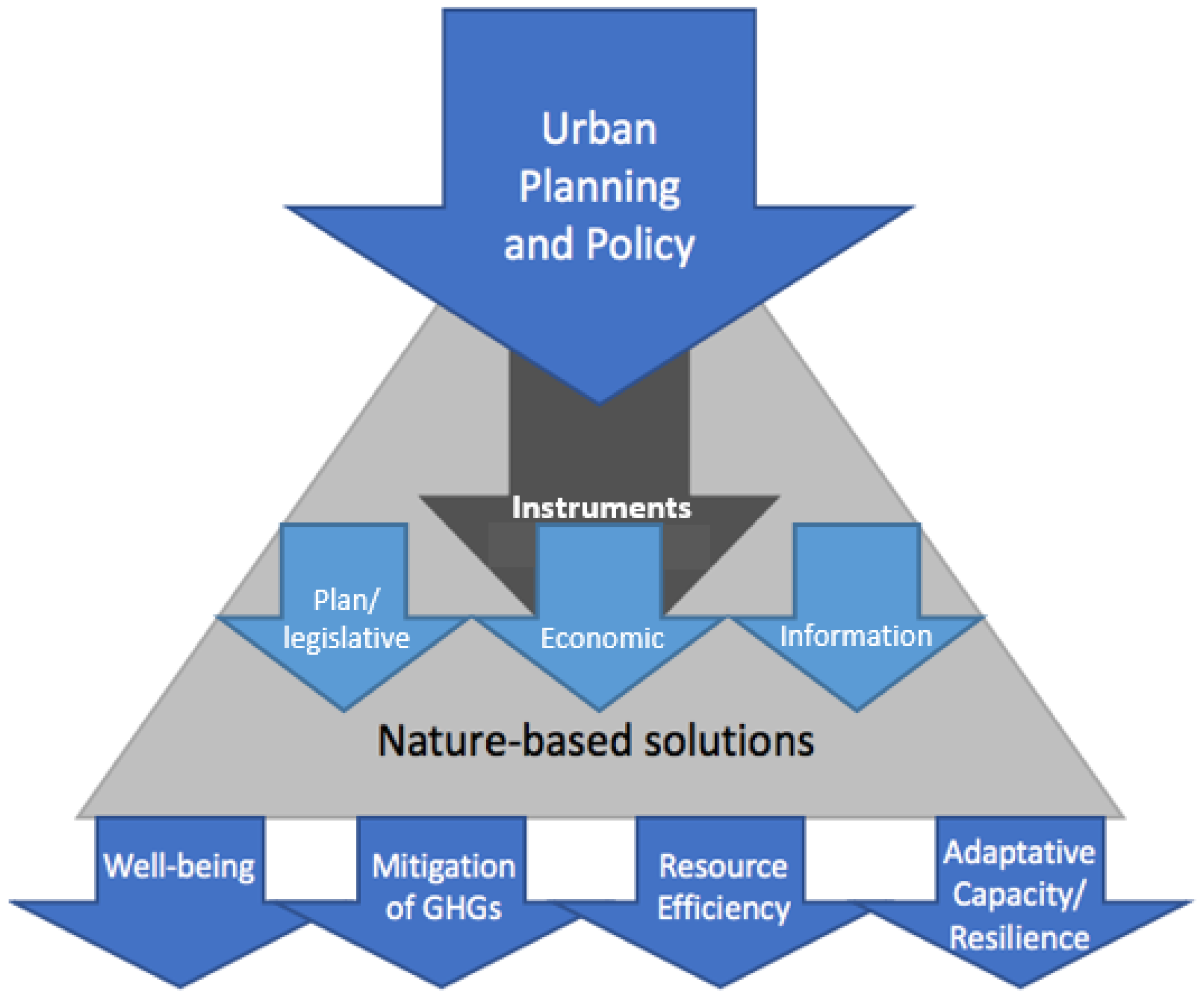

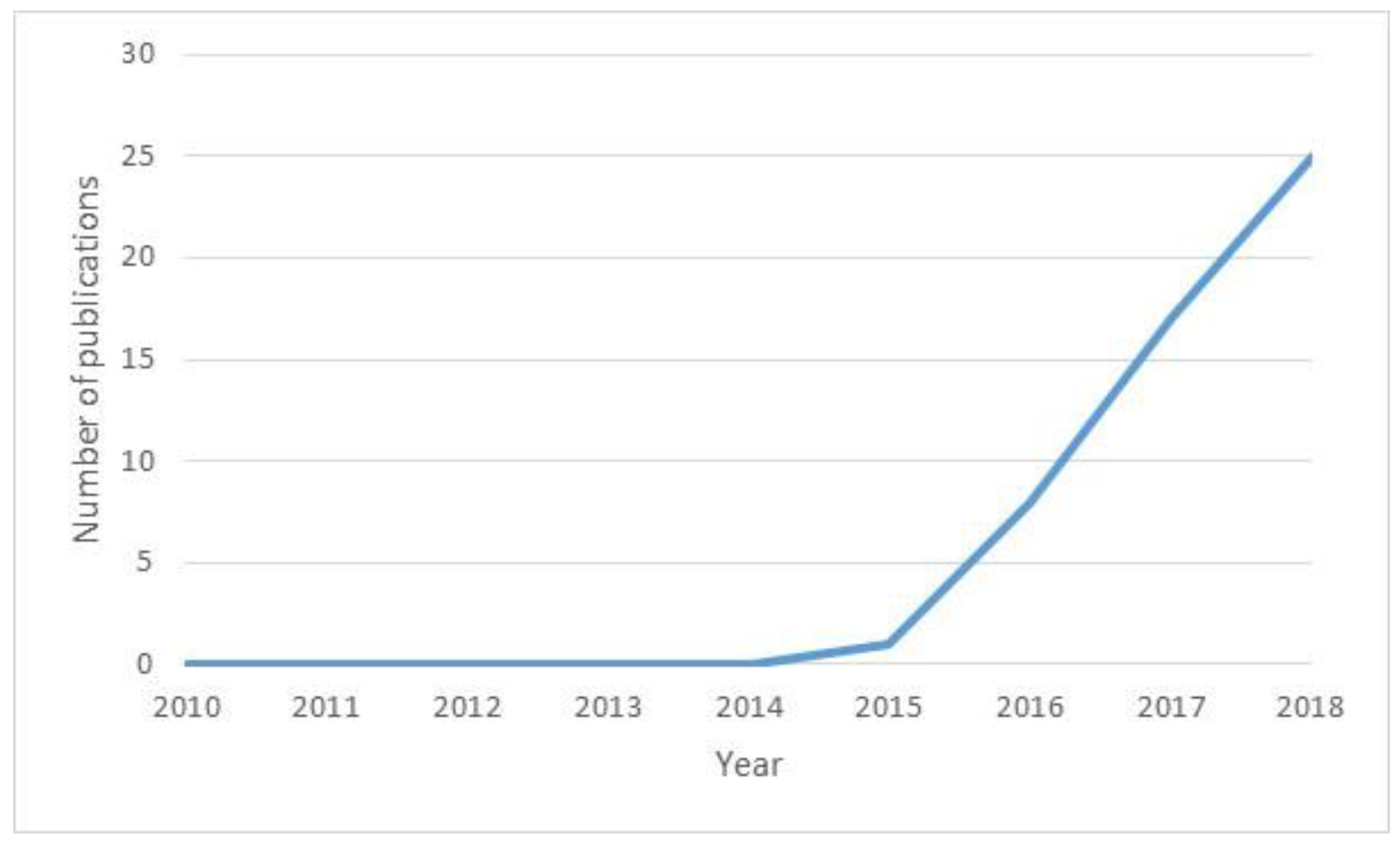
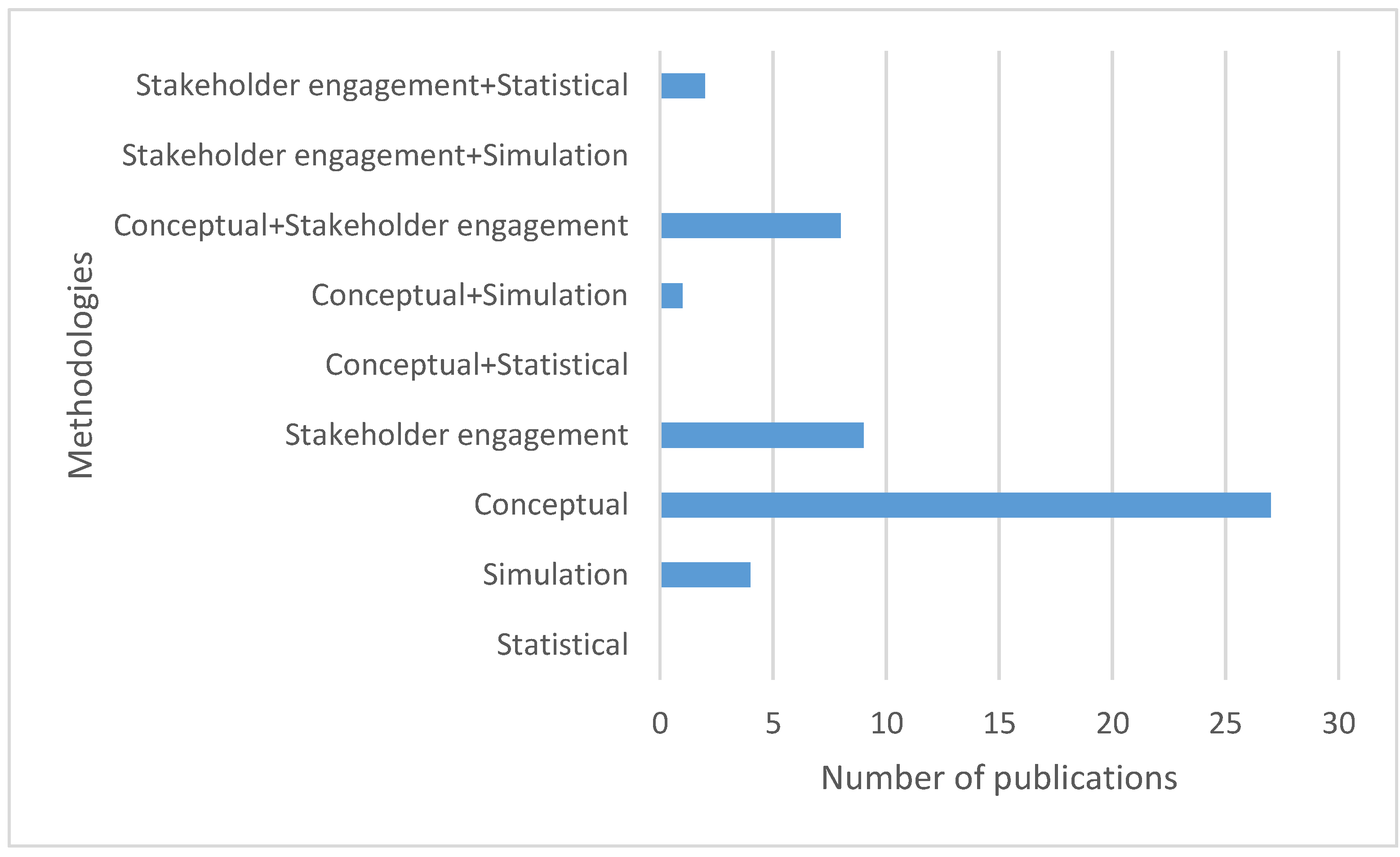
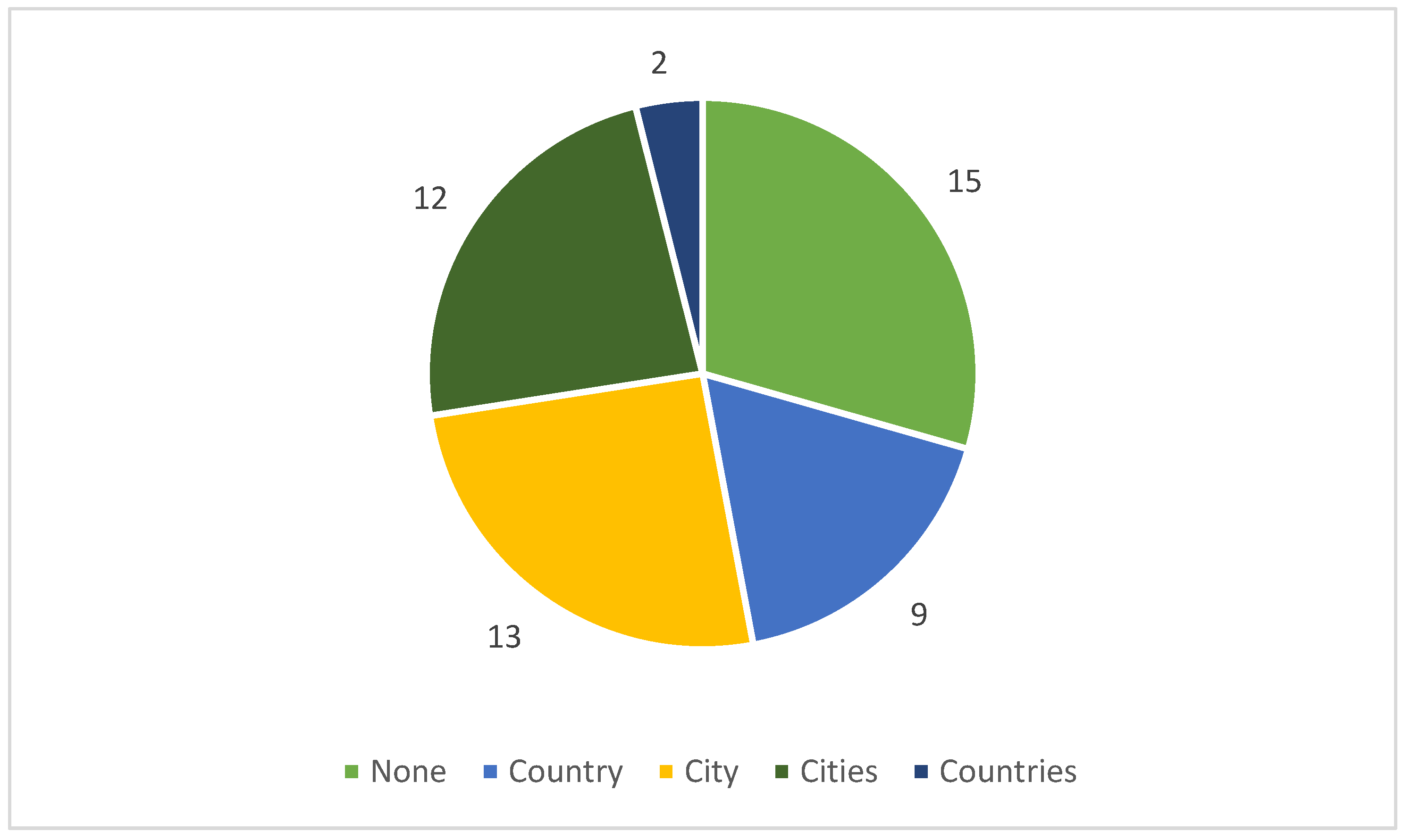
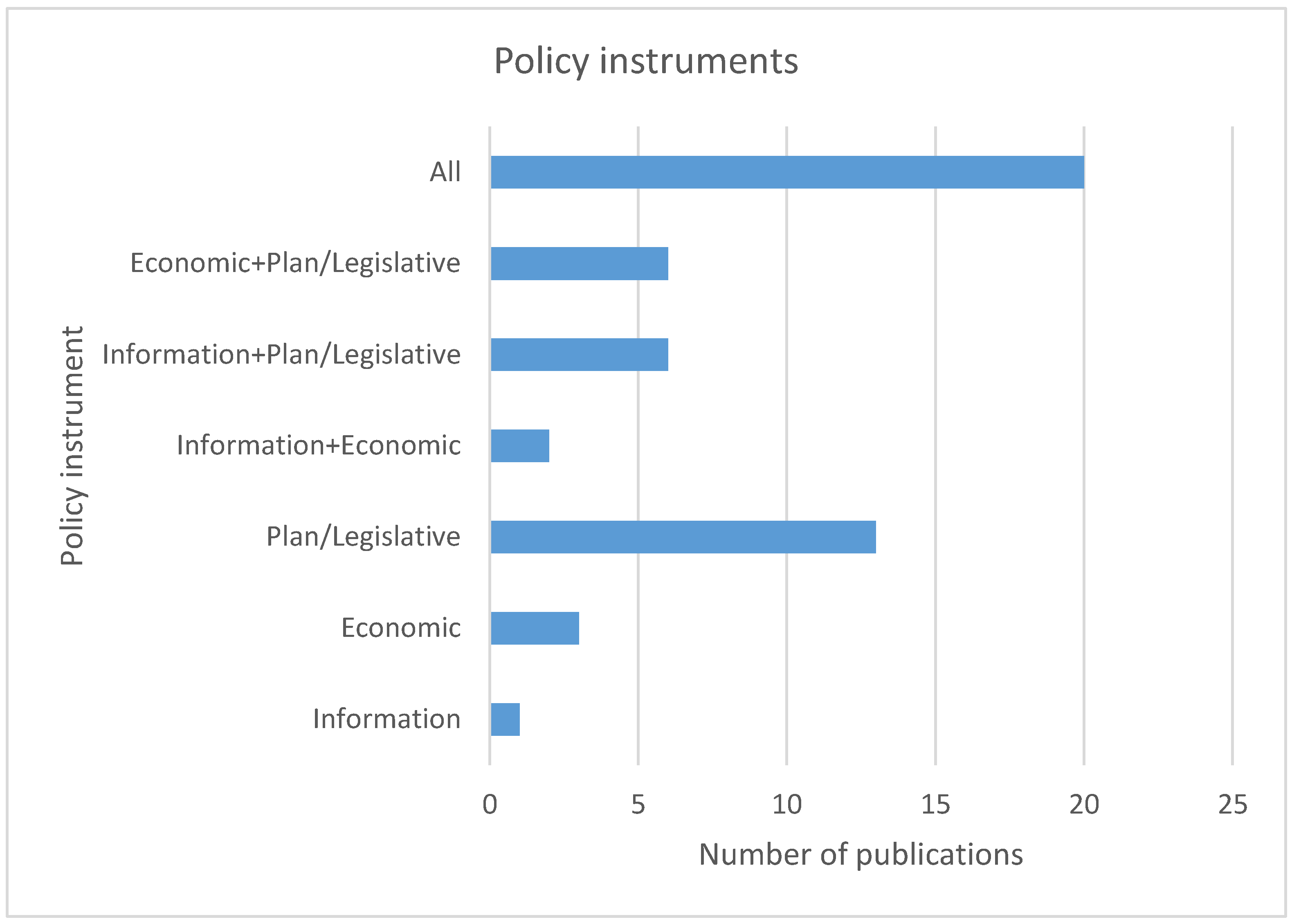
| Plan/Legislative instruments (45) | [1,2,3,4,5]; [9]; [10]; [13,14,15]; [19]; [20]; [22,23,24]; [28]; [30]; [32]; [33]; [40]; [42,43,44,45,46,47]; [50,51,52,53,54,55,56,57,58,59,60,61,62,63,64,65,66,67,68]. |
| Economic instruments (31) | [2,3,4]; [13]; [15]; [16]; [19]; [21]; [30]; [32]; [33]; [40]; [41]; [45]; [47]; [49]; [51]; [52]; [55,56,57]; [59]; [61,62,63]; [65]; [67,68,69,70,71]. |
| Information instruments (29) | [1]; [3,4,5]; [10]; [13]; [15]; [16]; [19]; [30]; [33]; [40]; [42]; [45]; [47]; [51,52,53,54,55,56]; [59]; [61]; [63,64,65]; [68]; [70]; [72]. |
Publisher’s Note: MDPI stays neutral with regard to jurisdictional claims in published maps and institutional affiliations. |
© 2021 by the authors. Licensee MDPI, Basel, Switzerland. This article is an open access article distributed under the terms and conditions of the Creative Commons Attribution (CC BY) license (https://creativecommons.org/licenses/by/4.0/).
Share and Cite
Mendonça, R.; Roebeling, P.; Fidélis, T.; Saraiva, M. Policy Instruments to Encourage the Adoption of Nature-Based Solutions in Urban Landscapes. Resources 2021, 10, 81. https://doi.org/10.3390/resources10080081
Mendonça R, Roebeling P, Fidélis T, Saraiva M. Policy Instruments to Encourage the Adoption of Nature-Based Solutions in Urban Landscapes. Resources. 2021; 10(8):81. https://doi.org/10.3390/resources10080081
Chicago/Turabian StyleMendonça, Rita, Peter Roebeling, Teresa Fidélis, and Miguel Saraiva. 2021. "Policy Instruments to Encourage the Adoption of Nature-Based Solutions in Urban Landscapes" Resources 10, no. 8: 81. https://doi.org/10.3390/resources10080081
APA StyleMendonça, R., Roebeling, P., Fidélis, T., & Saraiva, M. (2021). Policy Instruments to Encourage the Adoption of Nature-Based Solutions in Urban Landscapes. Resources, 10(8), 81. https://doi.org/10.3390/resources10080081








